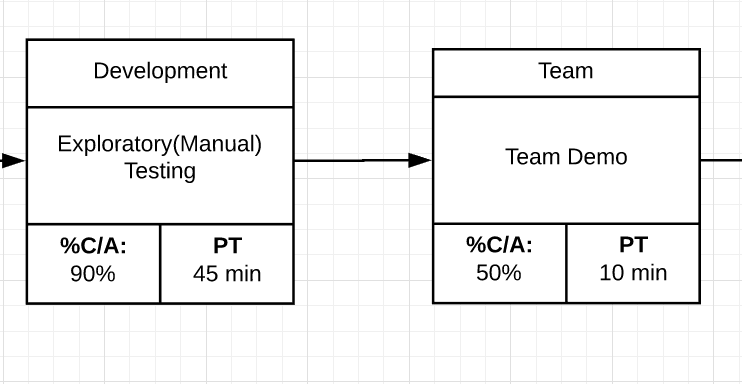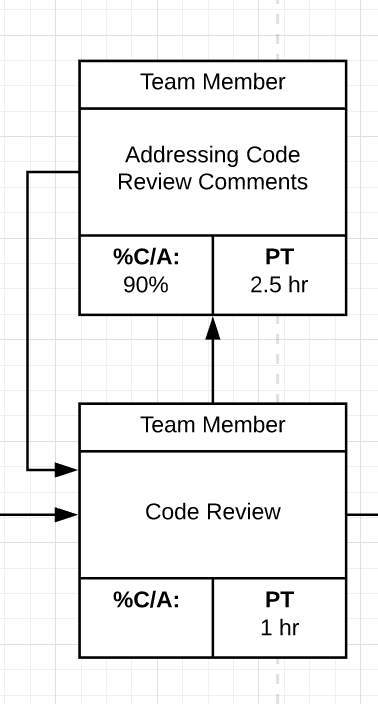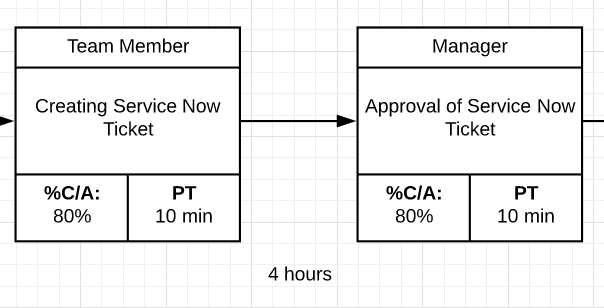Value Stream Mapping
A guide to conducting a Value Stream Mapping Workshop to optimize your development process.
2 minute read
The Value Stream Mapping Workshop uncovers all steps from idea conception to production, aiming to identify removable steps, bottlenecks, and high-defect areas.
Overview
Value Stream Mapping helps teams:
- Identify and remove unnecessary steps
- Uncover waiting periods between steps
- Highlight steps with high defect rates
The outcome guides the design of an improved value stream, prioritizing changes to reduce waste in the current flow.
Prerequisites
- An established process for value delivery (for a “to be” value stream)
- Participation from all stakeholders in the value stream
- Understanding of key terms:
- Wait time/non-value time
- Process time/value add time
- Percent Complete/Accurate (%C/A)
Recommended Practices
Start mapping from delivery and move backward to ensure no steps are missed.
Process
1. Identify the Source
Example
Team DemoFor each source of Requests, determine:
- Average process time
- Involved stakeholders
- Percentage of work rejected by the next step

Process Step Example
2. Identify Rework Loops
Rework loops are interruptions where steps need correction.

Rework Loop Example
3. Identify Wait Time
Calculate wait time between steps, considering your team’s cadence.

Wait Time Example
Outcomes
- Process time/wait time of your flow
- Visual representation of the value stream(s)
- Potential constraints (represented as kaizen bursts)

Complete Value Stream Map
Tips
- Regularly review and update the value stream map
- Consider all potential flows for team processes
Value Proposition
Understanding how to value stream map team processes helps identify delivery constraints and improvement opportunities.
Acceptance Criteria
- Value stream all processes associated with delivering value
- Create actionable improvement items from the exercise